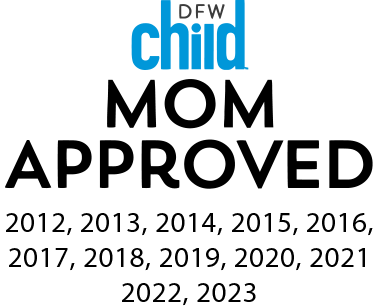Dental Emergencies – COPPELL, TX
Dental Emergencies
Toothache

Start by cleaning the affected tooth, then rinse your mouth out thoroughly with warm water. Floss to remove any food that may be stuck in between your teeth. If the pain continues, call your local dentist. Avoid placing aspirin or heat on the gum tissue or the tooth itself. Apply a cold compress to reduce any swelling and contact the dentist right away.
Cut/Bitten Tongue, Lip, or Cheek

To control swelling, apply ice to the injured areas. If bleeding is present, apply gentle yet firm pressure to the area using either a cloth or gauze. Call a doctor or visit a hospital emergency room if bleeding cannot be stopped with firm pressure.
Knocked-Out Permanent Tooth

Find the tooth if possible and handle it by the crown portion only. Avoid touching the root. Rinse the tooth with water only and DO NOT use any soap or scrub the tooth unnecessarily. Look for any fractures. If the tooth is in one piece, do your best to reinsert it into your open socket. Once in place, bite down on gauze to keep it preserved in the jaw. You can also transport the tooth to a cup of milk or your own saliva. If old enough, you can also place the tooth in between your cheek. This method is not advised for young children. Get to our office right away as time is critical to saving your tooth.
Knocked-Out Baby Tooth

Contact your pediatric dentist during business hours. This is not usually an emergency, and in most cases, no treatment is necessary. However, a baby tooth that has been knocked out too early can cause issues with the patient’s development, so contact the dentist as soon as you can to confirm if treatment is necessary. At your appointment, they can tell you if the other treatment is needed to protect their developing smile or if you can move forward without future care.
Chipped/Fractured Permanent Tooth

Get in touch with your pediatric dentist right away. In order to save the tooth, prevent an infection from developing, and lower your need for extensive dental treatment, it’s important to act quickly. Reduce swelling by rinsing your mouth out with water and applying a cold compress. Locate any pieces of the tooth and bring them to the office.
Chipped/Fractured Baby Tooth

When a tooth is fractured or chipped, a pediatric dentist may be able to restore it with a dental filling. They can then reshape and polish the tooth to make it look more even. However, this depends on the severity of the injury. Make sure to bring any pieces of the tooth with you to the office and give them a call as soon as possible. Baby teeth may be meant to fall out, but early removal can cause problems with their oral development.
Severe Blow to the Head

A head injury can be detrimental if not addressed right away. For example, if your child is complaining about a toothache, it could be because teeth could have been loosened or partially knocked out of place. If the injury itself is serious, it’s best to head to a hospital emergency room for treatment. Once your condition has improved, you can contact your pediatric dentist and see if any further treatment is needed from there.
Possible Broken or Fractured Jaw

If the jaw is broken or fractured as a result of a bad fall or sporting injury, the patient is likely to experience severe pain, oral bleeding, discomfort while chewing, jaw stiffness, and/or bruising in the face. The best option moving forward is to go to the emergency room. After your condition has stabilized, get to our office so a closer examination can be performed. We’ll confirm if any teeth were broken as a result of the injury.












